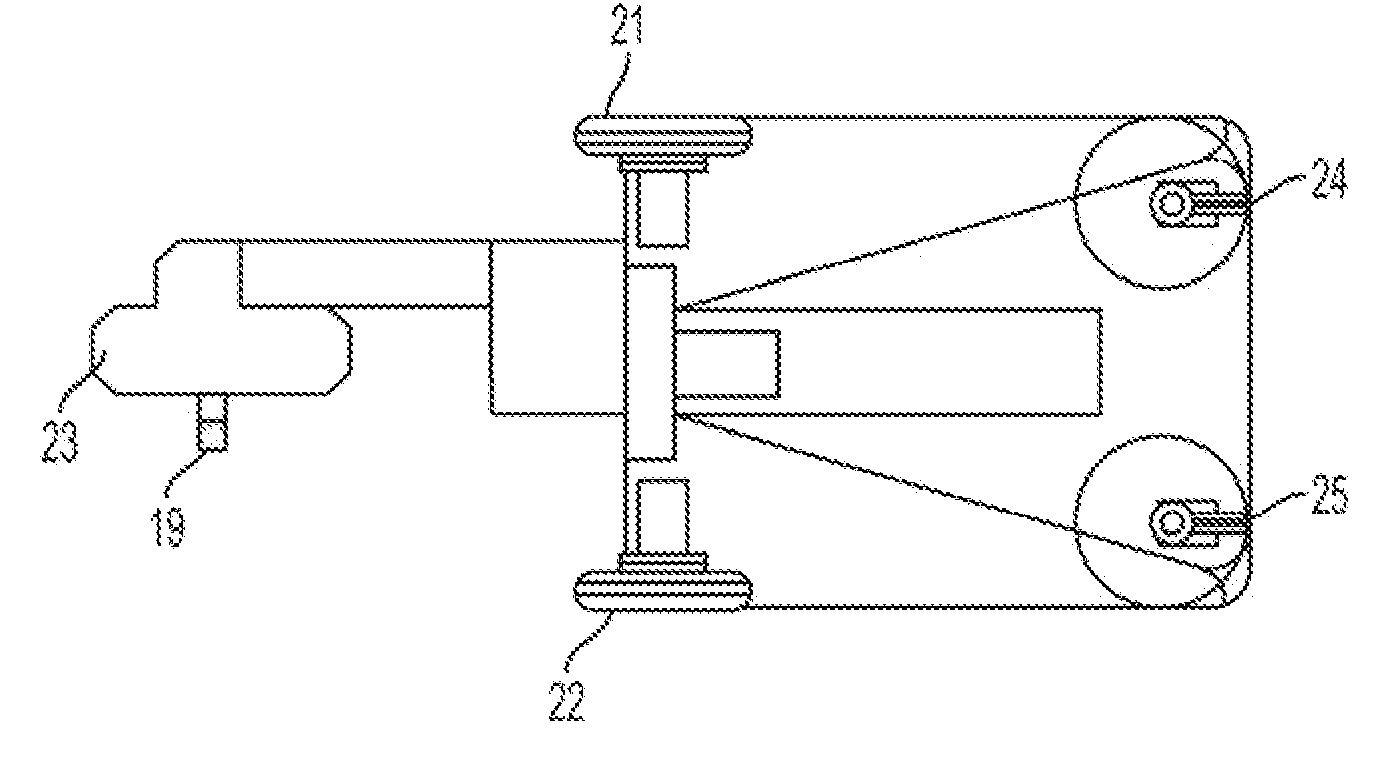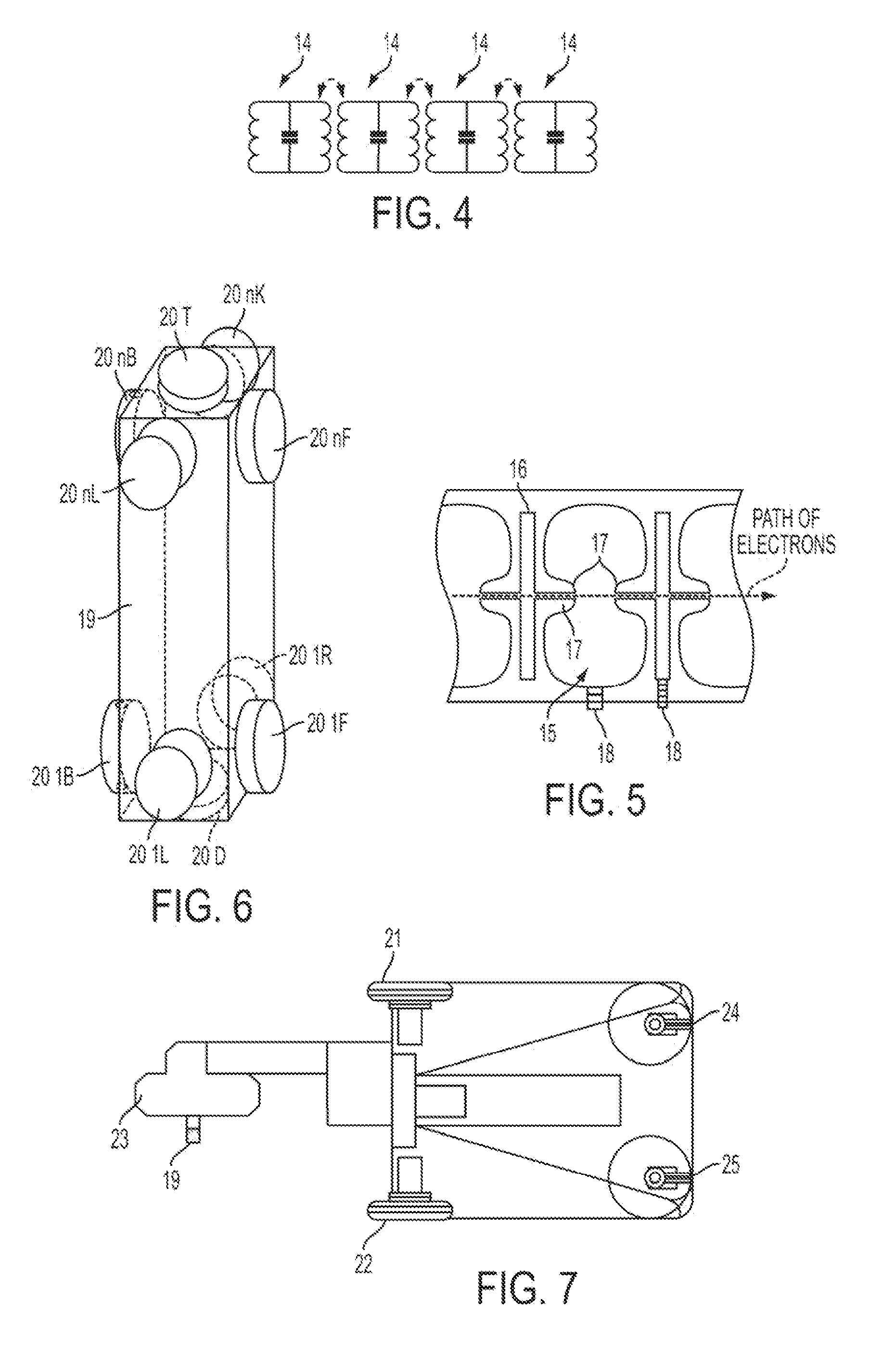Machine for intraoperative radiation therapy
a technology for intraoperative radiation therapy and machines, applied in radiation therapy, chemical to radiation conversion, x-ray/gamma-ray/particle irradiation therapy, etc., can solve the problems of not producing statistically reliable data, imposing considerable investment in a therapy, and not being convenient to use x, etc., to achieve the effect of convenient movemen
- Summary
- Abstract
- Description
- Claims
- Application Information
AI Technical Summary
Benefits of technology
Problems solved by technology
Method used
Image
Examples
Embodiment Construction
[0112]In the following of the description same references will be used to indicate alike elements in the Figures.
[0113]The machine for IORT according to the invention has a considerable mobility. In particular, the preferred embodiment has a weight lower than 400 Kg, eliminating any problem in floor statics and, most of all, in capacity of elevators and vehicles; moreover, it has reduced sizes, having a width of 80 cm, in order to make possible the movement through the elevator doors, and a length not larger than 2 metres; still, the turning radius is such to allow the machine to rotate around a vertical axis placed within the same machine; finally, the preferred embodiment of the machine is provided with autonomy of movement so that it can move without necessity to be supplied during transfer.
[0114]The machine for IORT according to the invention allows a sterile person, for example the radiotherapist, to directly control movement. This mobility can be obtained with a “sterile handl...
PUM
 Login to View More
Login to View More Abstract
Description
Claims
Application Information
 Login to View More
Login to View More - R&D
- Intellectual Property
- Life Sciences
- Materials
- Tech Scout
- Unparalleled Data Quality
- Higher Quality Content
- 60% Fewer Hallucinations
Browse by: Latest US Patents, China's latest patents, Technical Efficacy Thesaurus, Application Domain, Technology Topic, Popular Technical Reports.
© 2025 PatSnap. All rights reserved.Legal|Privacy policy|Modern Slavery Act Transparency Statement|Sitemap|About US| Contact US: help@patsnap.com



